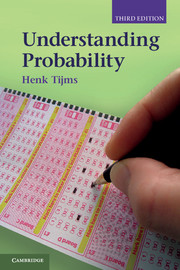Book contents
- Frontmatter
- Contents
- Preface
- Introduction
- PART ONE PROBABILITY IN ACTION
- PART TWO ESSENTIALS OF PROBABILITY
- 7 Foundations of probability theory
- 8 Conditional probability and Bayes
- 9 Basic rules for discrete random variables
- 10 Continuous random variables
- 11 Jointly distributed random variables
- 12 Multivariate normal distribution
- 13 Conditioning by random variables
- 14 Generating functions
- 15 Discrete-time Markov chains
- 16 Continuous-time Markov chains
- Appendix: Counting methods and ex
- Recommended reading
- Answers to odd-numbered problems
- Bibliography
- Index
7 - Foundations of probability theory
Published online by Cambridge University Press: 05 August 2012
- Frontmatter
- Contents
- Preface
- Introduction
- PART ONE PROBABILITY IN ACTION
- PART TWO ESSENTIALS OF PROBABILITY
- 7 Foundations of probability theory
- 8 Conditional probability and Bayes
- 9 Basic rules for discrete random variables
- 10 Continuous random variables
- 11 Jointly distributed random variables
- 12 Multivariate normal distribution
- 13 Conditioning by random variables
- 14 Generating functions
- 15 Discrete-time Markov chains
- 16 Continuous-time Markov chains
- Appendix: Counting methods and ex
- Recommended reading
- Answers to odd-numbered problems
- Bibliography
- Index
Summary
Constructing the mathematical foundations of probability theory has proven to be a long-lasting process of trial and error. The approach consisting of defining probabilities as relative frequencies in cases of repeatable experiments leads to an unsatisfactory theory. The frequency view of probability has a long history that goes back to Aristotle. It was not until 1933 that the great Russian mathematician Andrej Nikolajewitsch Kolmogorov (1903–1987) laid a satisfactory mathematical foundation of probability theory. He did this by taking a number of axioms as his starting point, as had been done in other fields of mathematics. Axioms state a number of minimal requirements that the mathematical objects in question (such as points and lines in geometry) must satisfy. In the axiomatic approach of Kolmogorov, probability figures as a function on subsets of a so-called sample space, where the sample space represents the set of all possible outcomes the experiment. The axioms are the basis for the mathematical theory of probability. As a milestone, the law of large numbers can be deduced from the axioms by logical reasoning. The law of large numbers confirms our intuition that the probability of an event in a repeatable experiment can be estimated by the relative frequency of its occurrence in many repetitions of the experiment. This law is the fundamental link between theory and the real world. Its proof has to be postponed until Chapter 14.
- Type
- Chapter
- Information
- Understanding Probability , pp. 229 - 255Publisher: Cambridge University PressPrint publication year: 2012



